Mary Skelter 2’s masterful use of one of gaming’s most important conventions
You may recall a while back that I mentioned I was finally delving into Compile Heart’s excellent Mary Skelter series for the first time, beginning with Mary Skelter 2 as that, apparently, is how you’re “supposed” to do it.
Nearly 40 hours of gameplay later, I’m thoroughly enamoured with Mary Skelter 2 for a variety of reasons, the most significant of which is how it makes absolutely masterful use of one of gaming’s most important conventions: the concept of risk versus reward.
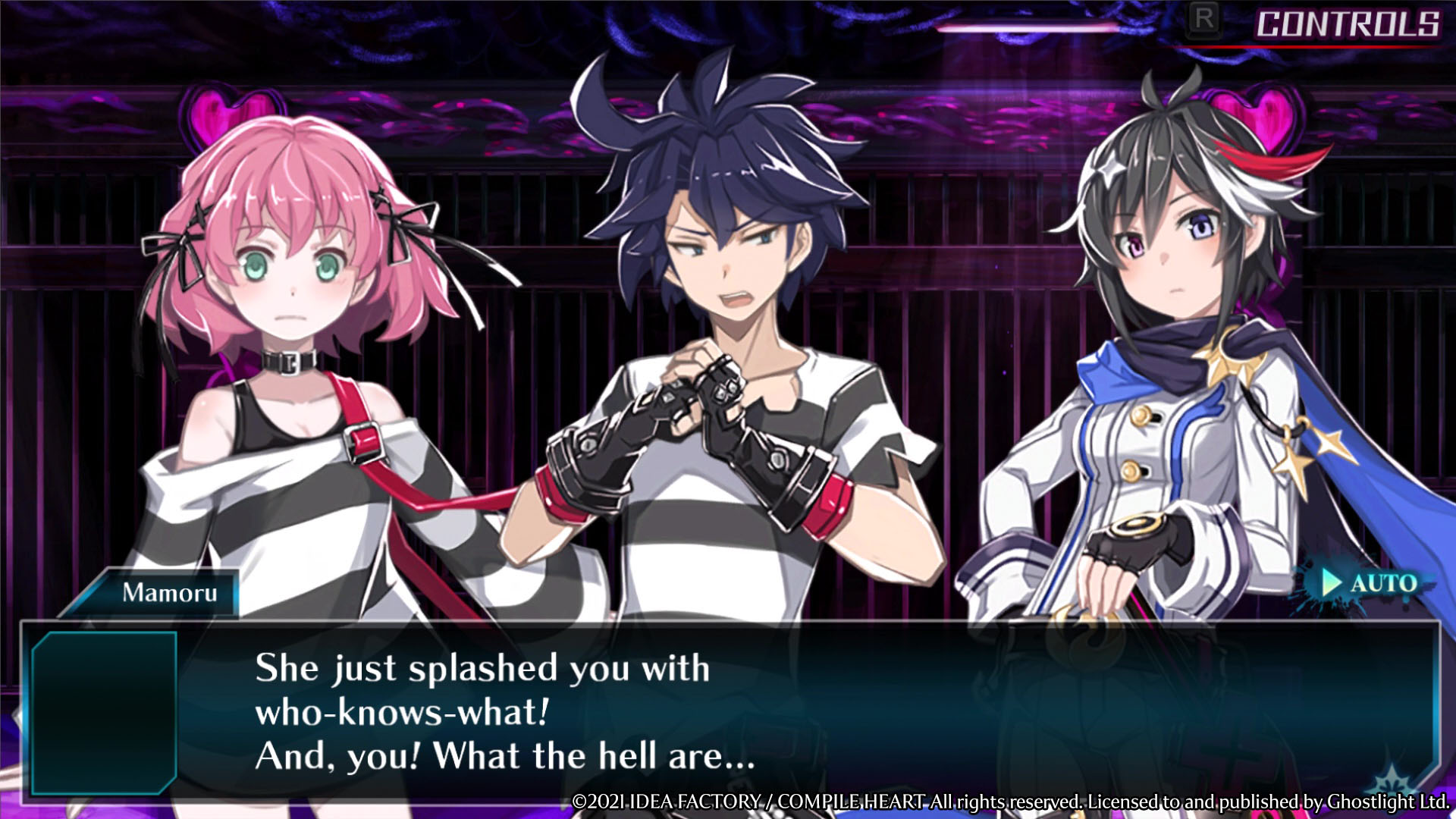
Risk versus reward is a concept that is hopefully self-explanatory, but let’s be clear about its definition so far as gaming is concerned. When we’re playing a game of some description, be it a video game, a board game, a tabletop roleplaying game or indeed anything else that makes use of some sort of “mechanics” to power the activity as a whole, the experience is inevitably more compelling if you are presented with some meaningful choices to make along the way. And the easiest way to make choices feel meaningful is to present the player with potential consequences for things going wrong.
In other words, the player should feel compelled to take risks in order to attain greater rewards. In arcade-style video games, this often means taking things quickly rather than cautiously in order to attain greater rewards. In board games and tabletop roleplaying, risk versus reward often means taking a chance on something that will place you at an advantage, but leaving it at least partly up to fate through dice rolls or card draws.
It’s even something you see in sports: do you take a risky shot on goal on the understanding that your opponents might end up with possession, or do you hang back and play defensively?
Role-playing video games might not necessarily be the first place you’d think to look for compelling use of risk versus reward, as many of them end up boiling down to being a numbers game: make sure your numbers are bigger than the enemies’ and you’ll win.
This is a gross oversimplification of a longstanding and incredibly diverse genre, of course — not to mention the fact that role-playing games are, at their core, based on virtual dice rolls and card draws, the very definition of risk versus reward as outlined above — but it’s true that in video game terms, the risk versus reward concept is most commonly associated with less strategic, more reflex-based games.
Mary Skelter 2’s use of risk versus reward demonstrates that it is indeed very possible to incorporate this concept into a turn-based game where the emphasis is on preparation and strategy. And it does this through a variety of means. The result is a game where you never feel like you’re just going through the motions; even when you’re grinding for experience, money, item drops or quest rewards, there’s always that slight fear at the back of your mind that things could possibly go wrong if you push things just a little too hard.
Let’s take a specific look at the various mechanics in Mary Skelter 2 that make use of risk versus reward as a core concept.
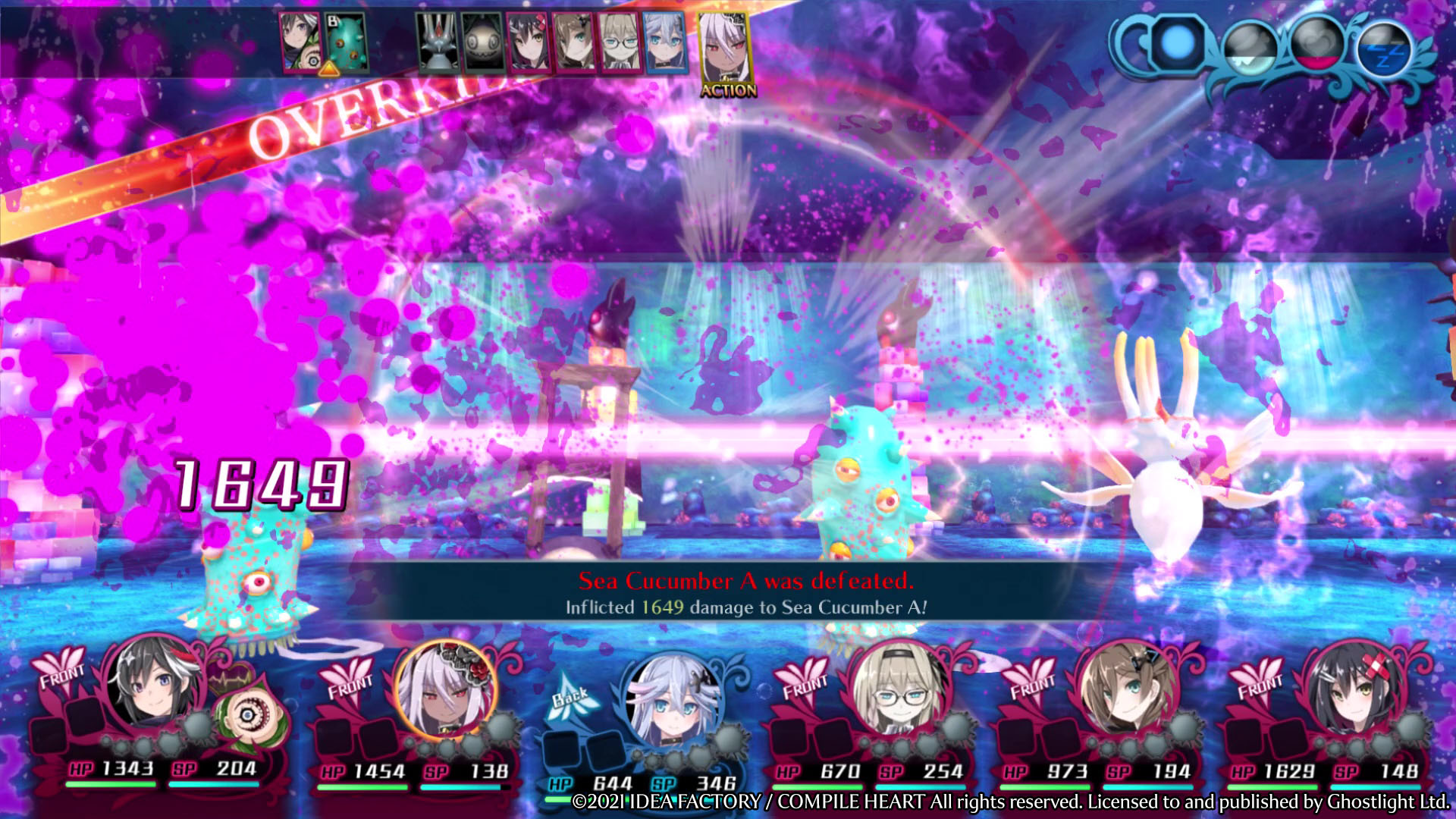
Probably the most obvious one is the game’s “Blood Splatter” system. In Mary Skelter 2’s combat, your active party members will gradually get splattered with enemy blood as combat progresses. Blood splatters become more likely with critical hits and “overkills”, where you deal far more damage than is needed to defeat an enemy, and certain abilities are specifically designed to produce more blood splatters.
Each playable character in Mary Skelter 2 has a “maximum blood amount” according to their job that determines how much blood they can be splattered with before a five-step meter fills up. This is a static value for most jobs, but there is at least one available that gradually increases its maximum blood amount as it levels up.
Blood splatters have several uses in Mary Skelter 2. Firstly, if a character’s splatter meter fills up to at least three out of five, another character can “lick” them on their turn to empty their splatter meter and obtain some sort of benefit: usually either immediate healing or an ongoing buff.
For example, if someone licks protagonist Otsuu, she confers a “Princess Shield” on the entire party, which completely blocks all but the most powerful attacks completely; likewise, if someone licks Little Mermaid, she confers temporary regeneration on the entire party. You can hopefully see how this is useful, especially in more protracted fights.
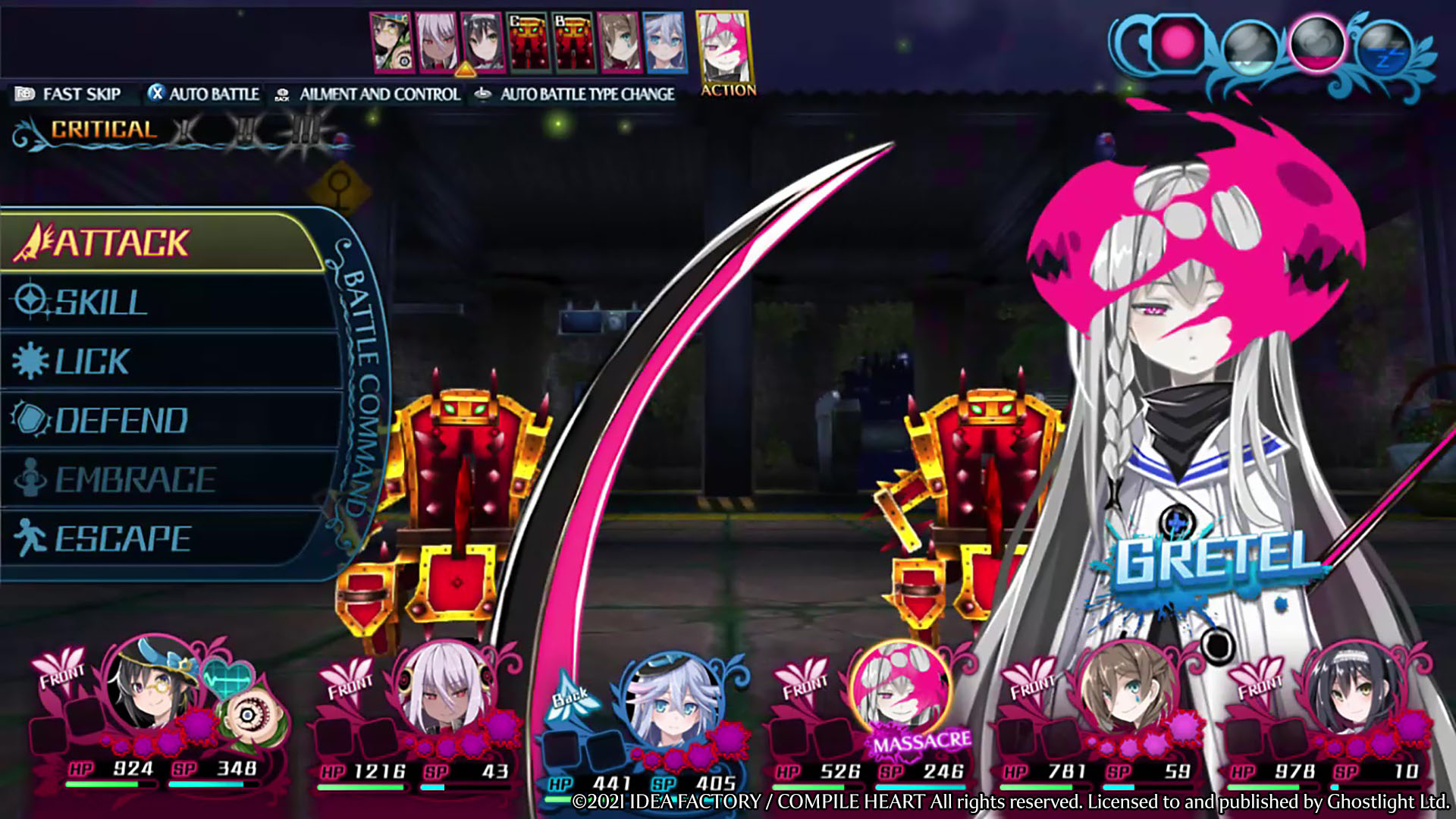
Secondly, if a character’s splatter meter fills up to five out of five, on their next turn one of two things will happen: either they will enter “Massacre” mode, whereby they become significantly more powerful and gain access to some abilities they can only use while in Massacre state; or they will enter Blood Skelter mode, at which point they will become even more powerful than in Massacre mode, but will also become completely uncontrollable and potentially attack allies as well as enemies.
Blood Skelter can deal massive damage to the enemy, but it can also decimate your own party in the space of a turn or two, particularly if multiple characters fall to it at once and all end up attacking each other. Narratively speaking, it’s an extremely undesirable state to fall into — but mechanically, it’s the very definition of risk versus reward; potentially great rewards, but absolute disaster if things go south.
Blood Skelter also becomes significantly more dangerous as the game progresses and you advance your characters. Since a character in Blood Skelter has access to all the character’s usual abilities but with significantly buffed stats, being on the receiving end of, say, an area-effect or attack-all ability if they decide to attack the party can be absolutely devastating. Thus this is something you may want to take into consideration when building your characters’ loadouts of abilities.
There isn’t a set rate for the likelihood of Blood Skelter occurring. Instead, it’s determined by the amount of “Corruption” a character has built up over time, represented by their blood splatter meter darkening. The darker it is, the more likely they will hit Blood Skelter instead of Massacre when filling up their splatter meter.
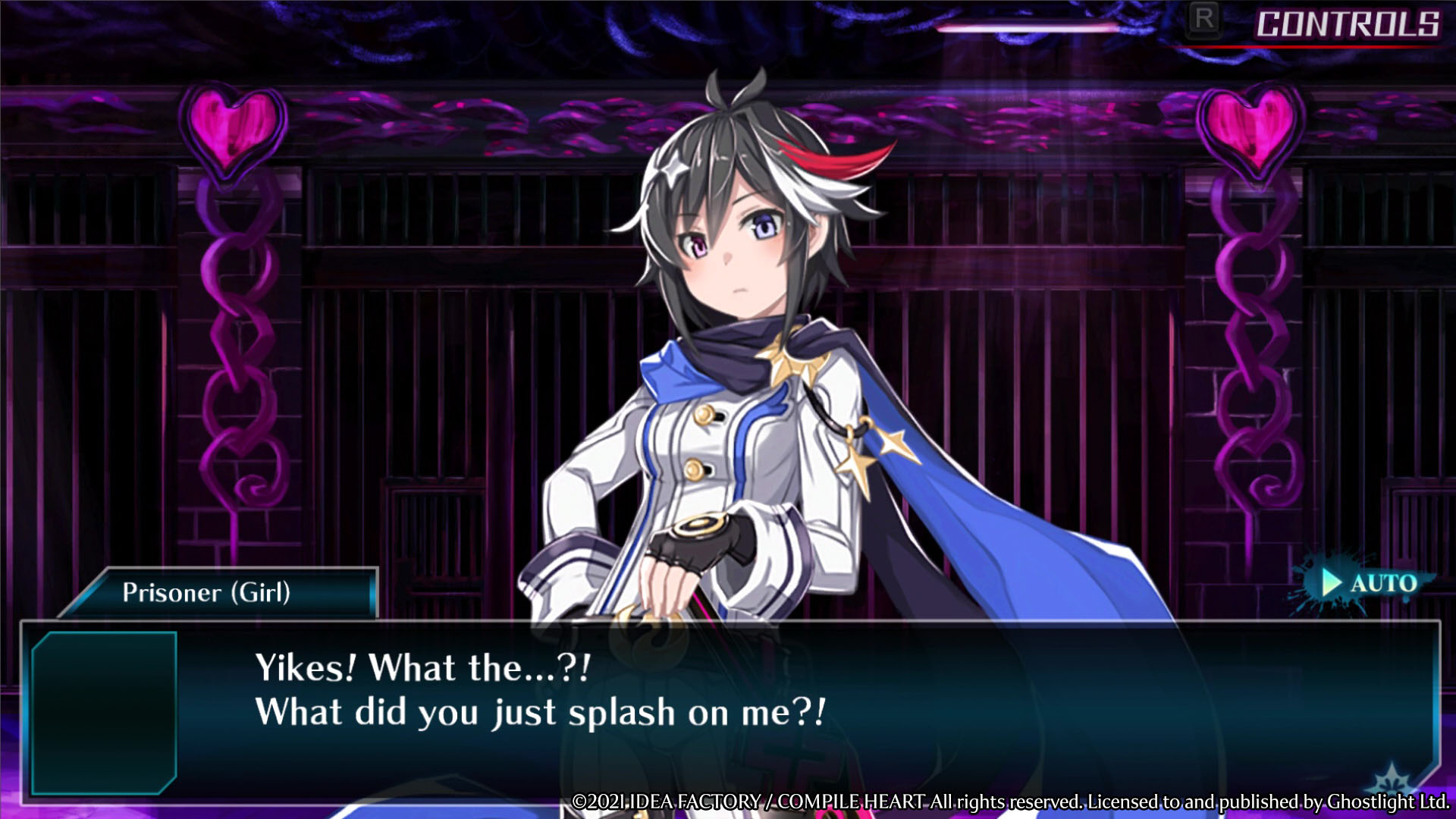
That’s not where it ends, though. The Corruption level of your characters in Mary Skelter 2 can be managed by Otsuu’s partner Nightmare Jack, whose blood has purifying properties. Should you spend some or all of Otsuu’s turn getting Jack to splatter the other characters with blood, you can purge their corruption and make them significantly less likely to fall to Blood Skelter.
This, however, means that you can’t make as much use of Otsuu’s own abilities; she gets two actions per turn instead of all the other characters’ one, but using Jack to purge just once effectively halves her damage output, and using him twice means she deals no damage.
On top of this, you also have to take Jack’s mental state into account. The more Jack uses his blood, the lower his mental state declines, and the lower his mental state, the more likely he is to transform into an uncontrollable “Ripper” state. This isn’t quite as dangerous as a character in Blood Skelter state, particularly later in the game, but his Nightmare Zone ability has the potential to completely prevent a character from acting for a turn or more, which can make a significant impact in a tough battle. Also, Jack going on a rampage also causes Otsuu’s Corruption to immediately hit maximum, making Blood Skelter on her next turn much more likely.
There’s an even bigger risk, too: if Jack turns into Ripper Jack (see what they did there) three times in the space of a single combat, that’s an immediate Game Over. Given how quickly most combat encounters are resolved in Mary Skelter 2, this is relatively unlikely to happen, but it’s always a possibility that you should be aware of, and indeed the game reminds you of this frequently via loading screen tips.
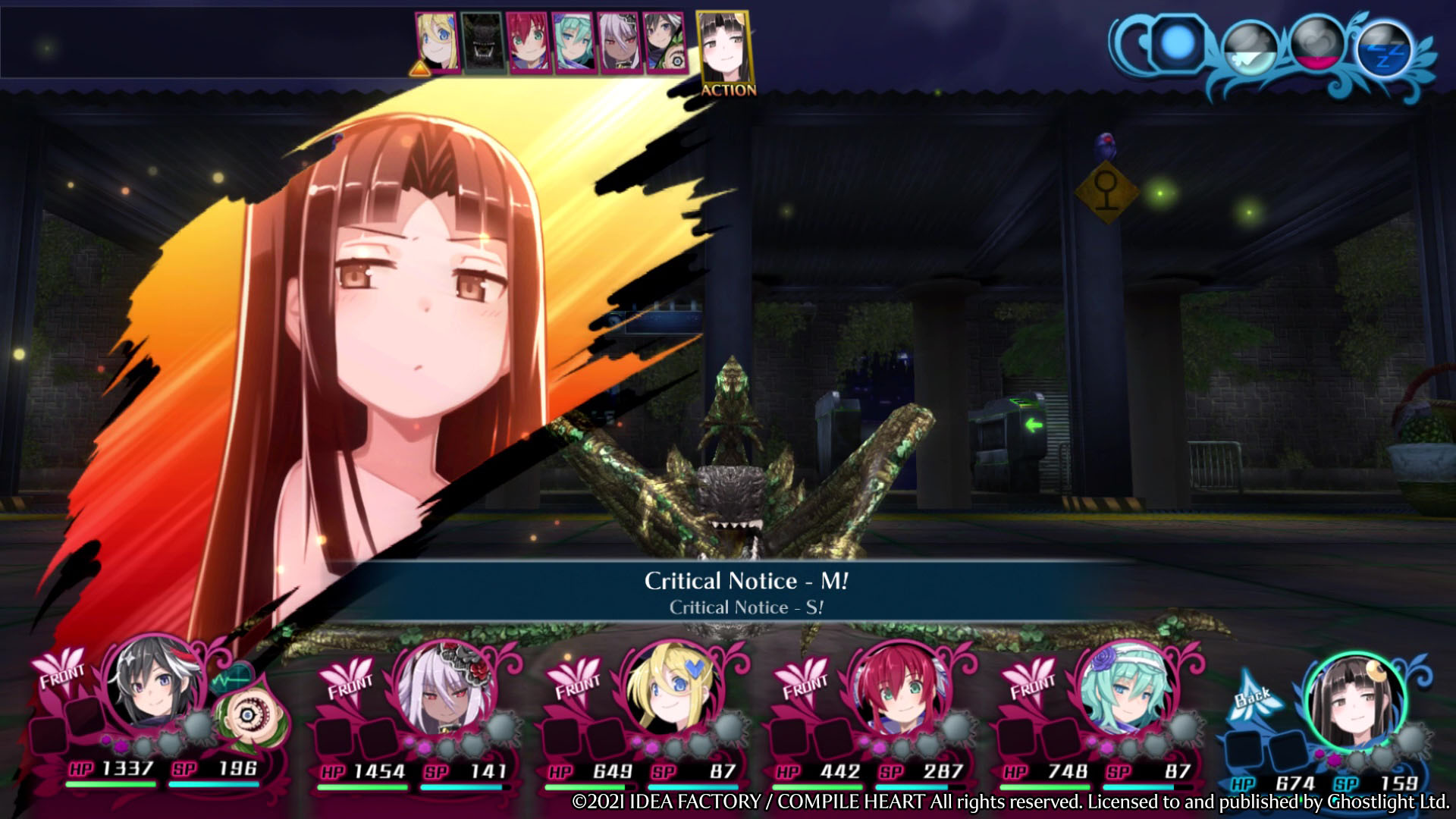
To further complicate matters, a character who is still under your control can choose to “Embrace” either Ripper Jack or a character in Blood Skelter, which essentially means they will “take the hit” for the party, losing their turn in the process. The character Hameln is particularly well set-up to do this thanks to most of her jobs being somewhat tanky in nature, but any character can deliver a combat hug in this way if you think they can handle it. And even if they can’t, one character falling is better than your whole party being knocked down.
These combat mechanics are the most obvious use of risk versus reward in Mary Skelter, but the concept is used throughout the game as a whole, too. For example, the game’s Blood Farm system allows you to shower yourself with loot by planting Blood Flowers in the dungeons and splattering them with blood, but to make the flowers bloom you need to have several battles. And when you harvest them, there’s no guarantee that they’ll give you loot you need — though using Hameln’s “Magnetic Piccolo” ability confers a random chance on every item harvested to immediately “update” itself to a more powerful, buffed-up version.
Character progression has an element of risk versus reward, too. Like most dungeon crawlers, Mary Skelter 2 offers the opportunity to reset your characters’ levels — here known as “Blood Devolution” — in exchange for buffed base stats and additional points to spend on job abilities. The more levels you “devolve” in one go, the bigger the bonuses — but of course, then you need to level them up again.
Do you do so by taking them into a dungeon well above their level and hoping your equipment and abilities will carry you through and help you level them up quickly? Or do you do it the slow, sensible and boring way by going through all the previous dungeons again and levelling up a bit at a time?
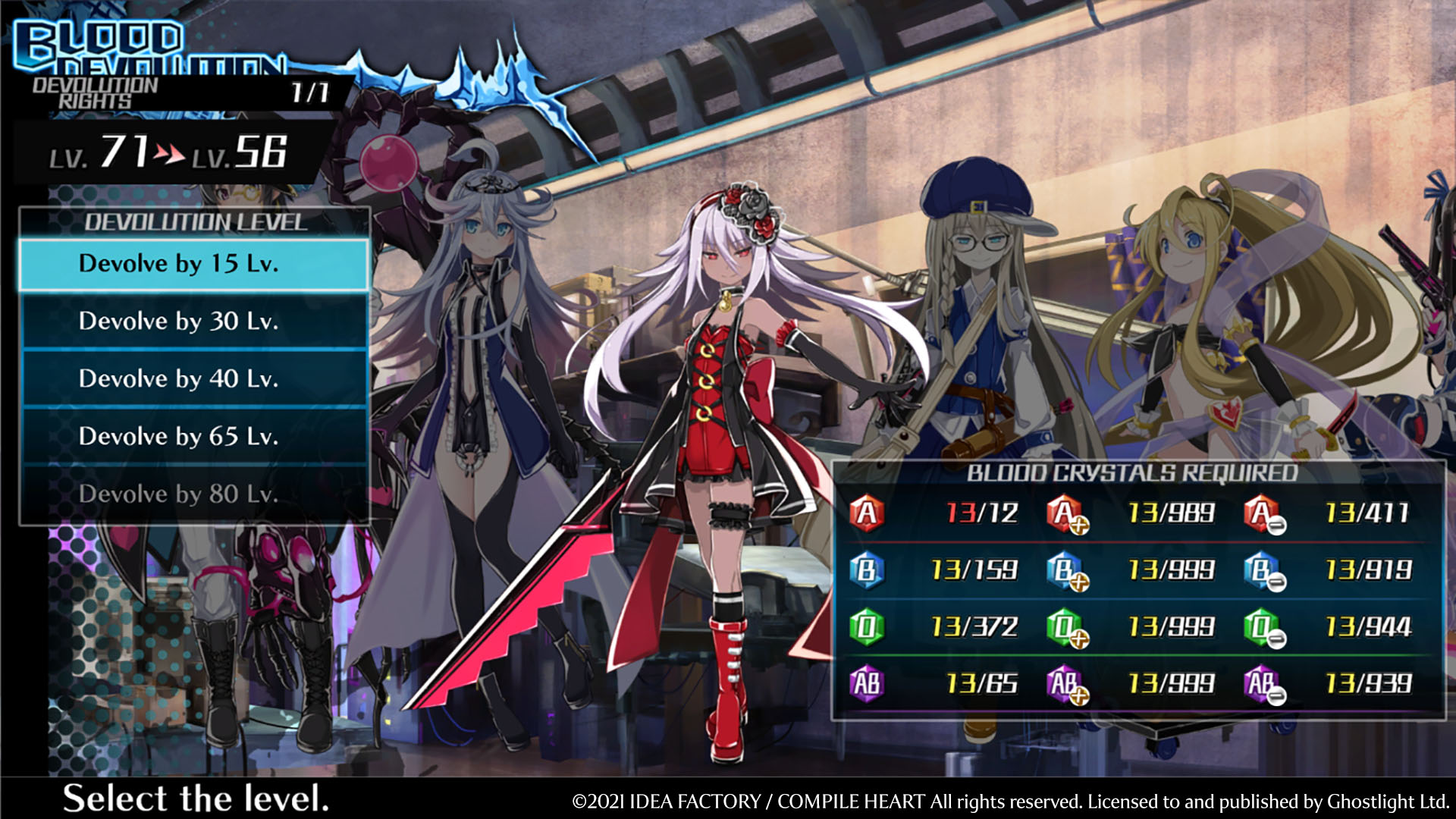
An additional question on that note, since most characters tend to level roughly in parallel with one another: do you Blood Devolve everyone at once, or one at a time? Do you take an individual into a dungeon rather than a party so they can hoover up all the experience for themselves? Are those increased stats and ability points really worth the effort?
And finally, there’s also a significant element of “press your luck” in Mary Skelter 2’s dungeon crawling parts. As you explore, the sentient “Jail” which forms the centrepiece to the game’s setting reacts in various ways. As you spill blood, its Hunger will be sated; as you find items, its Libido will be satisfied; and if you keep quiet when it’s sleeping, its Sleep need will be satisfied. Any time one of these three needs are fully satisfied, represented by meters in the corner of the dungeon exploration screen, you will receive a bonus determined by a roulette spin.
There are 20 different possibilities for the roulette to land on, only a few of which are displayed on a single spin. As you progress through the game, you’ll obtain “Jail Pieces” that allow you to make it more likely that certain options will appear — but, of course, obtaining these specific bonuses is dependent on them being drawn for the options on the roulette in the first place, and then your reflexes allowing you to make it land on the appropriate benefit.
Alongside this, continued exploration of the dungeons in a single expedition causes the Jail’s mood to gradually worsen, indicated by a percentage meter in the corner of the dungeon exploration screen. Each time you have a combat encounter, whether you win or escape, this meter will increase. The higher it is, the more powerful the monsters in the dungeon will be, meaning that the longer you spend on a single expedition, the more dangerous it will become. However, you can also manage the Jail’s mood to a certain degree by satisfying its needs; sometimes it’s worth obtaining a poorly timed bonus just to ensure you don’t run into powerful foes.
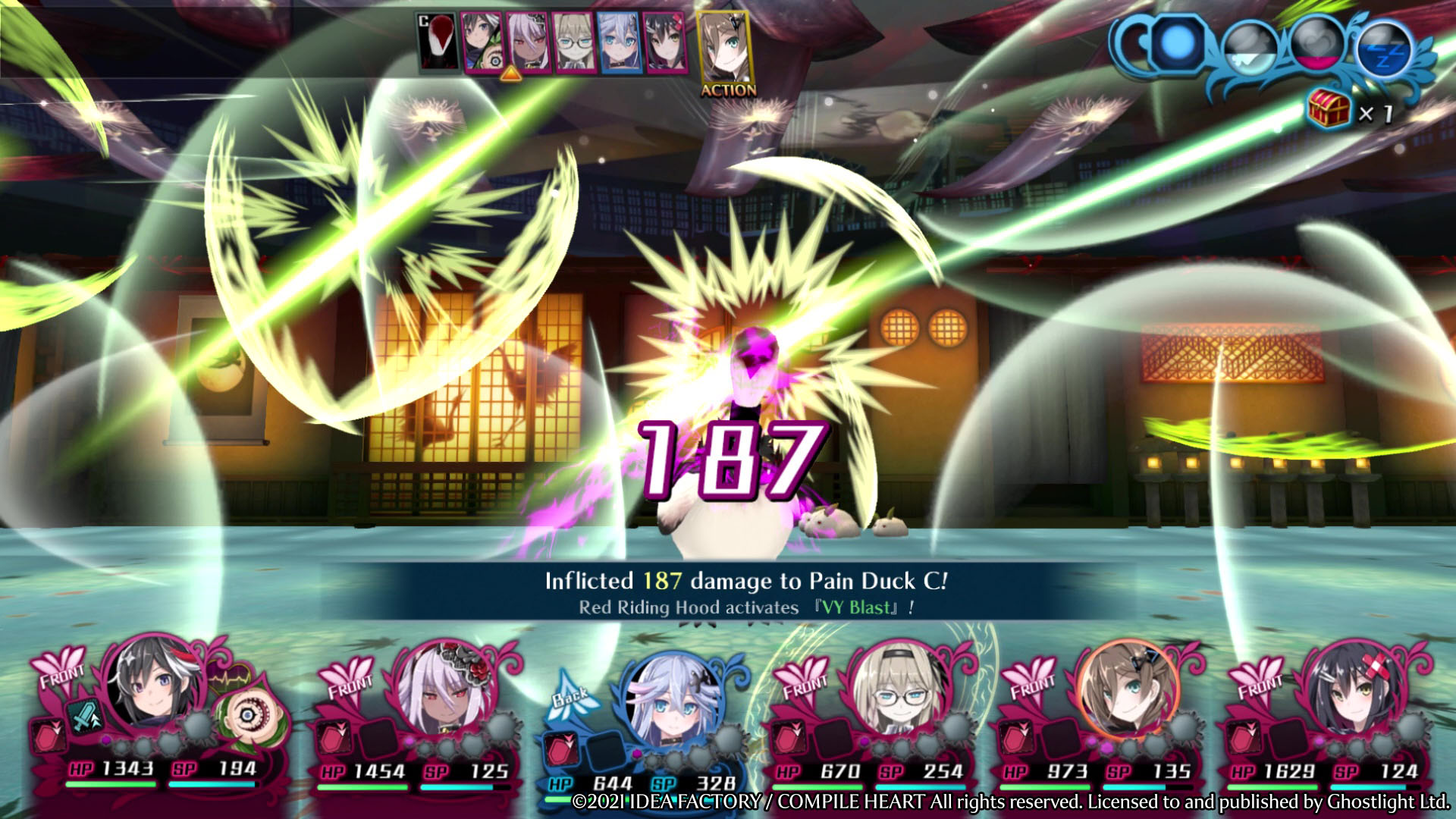
And finally, finally, we have the Jail Trial option, whereby you can set one or more specific debuffs or risks for each expedition into a particular dungeon, with each offering a reward in exchange. For example, completely preventing yourself from saving while in a dungeon rewards you with 30% additional experience. Taking the risk of certain items or abilities not being available in some (not all) combat encounters will provide additional opportunities to earn gold and loot. Debuffing certain character traits will increase others. It’s a really interesting approach to difficulty and risk versus reward that allows you to customise your experience quite significantly.
It should be abundantly clear by this point that the idea of risk versus reward is baked right in to the very structure of Mary Skelter 2, and this is entirely appropriate given the somewhat “Wonderland”-esque tendencies in parts of the game’s aesthetic. It’s a game that is designed to have a constant element of unpredictability and pressing your luck — and the result is one of the most compelling, consistently interesting dungeon crawlers in existence.
Join The Discussion
Rice Digital Discord
Rice Digital Twitter
Rice Digital Facebook
Or write us a letter for the Rice Digital Friday Letters Page by clicking here!
Disclosure: Some links in this article may be affiliate links, which means we may earn a small commission if you make a purchase after clicking on them. This is at no additional cost to you and helps support Rice Digital!
- Letter from the Editor: passing the torch - June 30, 2023
- Super Woden GP 2 is looking promising - June 30, 2023
- Inti Creates is making a 32 bit-style Love Live action platformer - June 26, 2023






